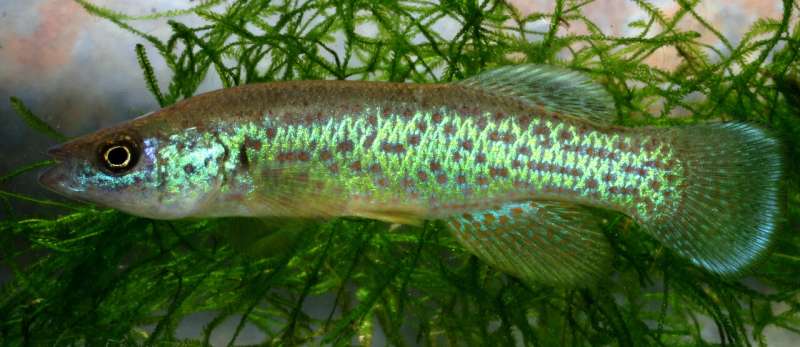Colorful Tennessee fish protected as endangered

n response to a petition and lawsuit from the Center for Biological Diversity, the U.S. Fish and Wildlife Service protected the Barrens topminnow today under the Endangered Species Act. The small, colorful fish is found only in central Tennessee in clear, spring-fed streams on the Barrens Plateau in Cannon, Coffee and Warren counties.
The Barrens topminnow was first proposed for Endangered Species Act protection more than 40 years ago, but the species is now critically endangered due to chronic underfunding of the Act.
"These beautiful fish are finally getting federal protection, but the decades of delay almost drove them extinct," said Tierra Curry, a senior scientist at the Center. "It shows the steep cost of underfunding the Endangered Species Act. We've got to start protecting imperiled wildlife before recovery gets more difficult and expensive."
The Barrens topminnow has suffered a 70 percent range loss. That's due to predation by introduced mosquitofish, loss of riparian vegetation to pasture, and climate change, which is causing severe drought and storm events in the Southeast. One of the topminnow's springs has dried up three times since 2006, and fish were rescued by scientists and held until the creek flow returned.
Once known from 18 sites, the fish persists at only five sites, and none are in good condition. To prevent its extinction, captive-breeding populations are being held at Conservation Fisheries Inc. in Knoxville and at the Tennessee Aquarium Conservation Institute in Chattanooga. For recovery, mosquitofish need to be removed; then barriers need to be installed, and populations need to be closely monitored.
"Extinction is a political choice and the scientists working to save Barrens topminnow and other endangered species desperately need more money," Curry said. "Congress should fully fund the recovery of endangered wildlife for their sake and for our own survival."
The Barrens topminnow was proposed for Endangered Species Act protection with critical habitat in 1977, but the proposal was never finalized. In 1982 it was instead placed on a waiting list for federal protection. The Center petitioned the Service to protect the fish as endangered in 2010.
The topminnow's range includes headwater streams in the Duck and Elk river watersheds, which are part of the Tennessee River drainage, and the Caney Fork watershed in the Cumberland River drainage. Today's listing says that critical habitat will be designated in the near future.
Barrens topminnow grows to four inches long, has flashy coloration, and swims near the water's surface, where it preys on mosquito larvae and other insects.
According to the Fish and Wildlife Service's own reports to Congress, hundreds of endangered species receive less than $1,000 annually for recovery. Many receive no funding at all. In addition, there are approximately 500 imperiled animals and plants still awaiting decisions on whether they need protection under the Act.
Earlier this year the Intergovernmental Science-Policy Platform on Biodiversity and Ecosystem Services, known as IPBES, warned governments around the world that 1 million species are now at risk of extinction because of human activity. IPBES scientists said that urgent actions are needed to avert mass extinction in the coming decades.
Meanwhile the Trump administration has slashed the Endangered Species Act and has now declined protection for more than 70 species and protected only 19—the lowest of any president at this point in the administration. In fiscal year 2019, deadlines have been missed for 46 plants and animals waiting on protection.
During the Obama administration, 360 species were protected under the Endangered Species Act. Under Clinton 523 species were protected, while 232 species were protected under Bush, Sr., 62 species under Bush, Jr., and 254 under Reagan.
Provided by Center for Biological Diversity


















